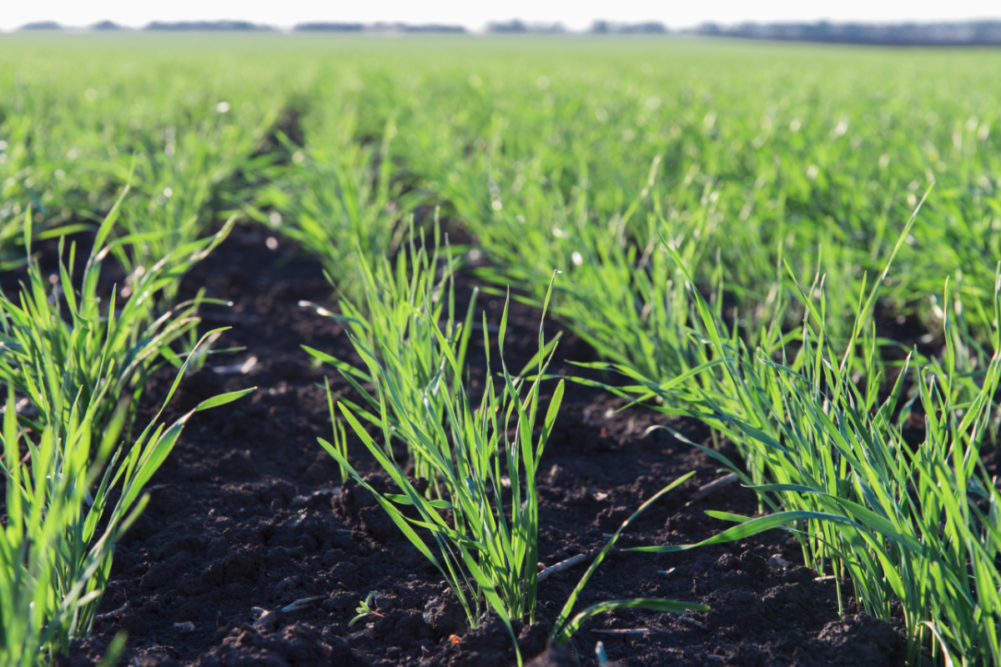KANSAS CITY — As winter storms swirl in hard winter wheat country bringing some moisture to drought-starved areas of Kansas, Colorado, and Nebraska, the condition of winter wheat in those key states indicate how much more precipitation will be needed in the spring for the crop to thrive as it emerges from dormancy.
Condition ratings for winter wheat planted in Kansas for harvest in 2021 declined slightly in the week ended Jan. 23 compared with the previous report issued 20 days earlier by the USDA field office in Manhattan, Kan. Winter wheat was rated 3% excellent, 40% good, 33% fair, 17% poor, and 7% very poor. In the last week of 2020 and first days of January, the office had rated Kansas wheat 6% excellent, 40% good, 37% fair, 12% poor, and 5% very poor.
Declines were similarly mild in Colorado, where winter wheat by Jan. 23 was considered 17% good to excellent and 47% fair. Three weeks earlier the crop was rated 19% good to excellent and 47% fair.
Oklahoma wheat was in much better shape, having improved to 61% good to excellent in the latest week from 51% in the week preceding the previous report, released Nov. 29, 2020, by the USDA in Oklahoma City. Texas wheat was rated 20% good, 0% excellent by the Southern Plains Regional Field Office in Austin, compared with 32% good to excellent in the week ended Nov. 28.
In the northern Great Plains region, only Montana remained a bright spot in wheat, with the winter crop rated 68% good to excellent this week, up from 65% in the previous report Jan. 3. Nebraska’s winter wheat crop conditions were appraised by the USDA in Lincoln at 34% good to excellent, down from 37% in the previous report three weeks earlier. South Dakota’s winter wheat was rated 32% good, 0% excellent in the latest week versus 37% good to excellent in the first days of the year.
Winter storms beginning Jan. 24 continue to issue varying amounts of moisture to hard winter wheat production states. Included are areas of eastern Colorado, western Kansas, the western tip of the Oklahoma panhandle, southwest Nebraska, and that state’s panhandle. All these areas remain under extreme to severe drought conditions, according to the US Drought Monitor issued Jan. 21.
Short-to-very-short topsoil moisture supplies by Jan. 24 were 55% in Kansas, 79% in Colorado, 40% in Oklahoma, 51% in Texas, 60% in Nebraska, 62% in South Dakota and 57% in Montana.
Short-to-very-short subsoil moisture supplies by Jan. 24 were 53% in Kansas, 83% in Colorado, 40% in Oklahoma, 51% in Texas, 64% in Nebraska, 64% in South Dakota and 51% in Montana.
In Colorado’s southeastern counties, “conditions were noted as extremely dry and moisture was needed. As of Jan. 21, snowpack in Colorado was 72% measured as percent of median snowfall,” the USDA noted.
Meanwhile in Texas, “small grains struggled throughout much of the state due to a lack of moisture,” the USDA said in its report. “Winter wheat progress was slowed by cold weather in areas of the Edwards Plateau. Winter wheat and oat seedings continued in some areas of South Texas.”
The US Drought Monitor indicated “approximately 81% of Montana is abnormally dry or in a current state of drought, with about 8 percent of the state in severe or extreme drought,” the USDA said.






